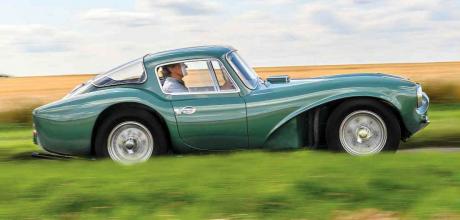1955 Aston Martin DB3S Coupe
This extremely rare and special Aston Martin belonged to Aston boss David Brown. And asStephen Archer finds, you can remove a car from its past, but you can’t remove the past from a car.
Photographer Tim Scott
ASTON MARTIN DB3S
David Brown's own ultra-rare racebred coupe
THE GUVNOR’S DB3S
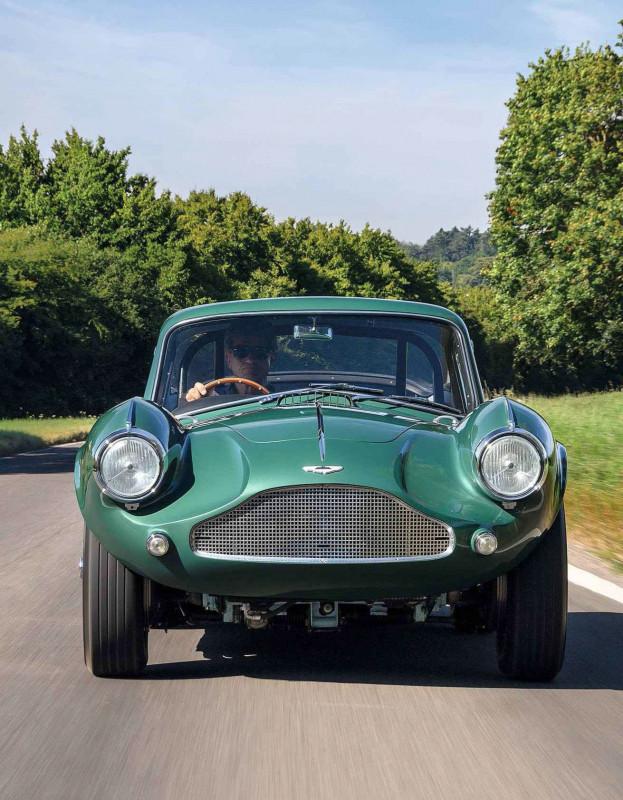
If a car is defined by its story then this DB3S is surely right up there with the great Aston Martins. It is a colourful story, literally, as we will see. You might expect to read that this is a tale of a rare, even esoteric Aston, a footnote in the marques model history under David Brown, but that would be to underplay its significance. Consider this: without the DB3S, Aston Martins final victory at Le Mans in 1959 with the DBR1 would not have happened. And, although most people associate Aston Martins racing success with the DBR1, the remarkable DB3S enjoyed a works racing career of five years and remained competitive in International sports car racing for six years, winning more trophies for David Brown than any other car that he would produce.
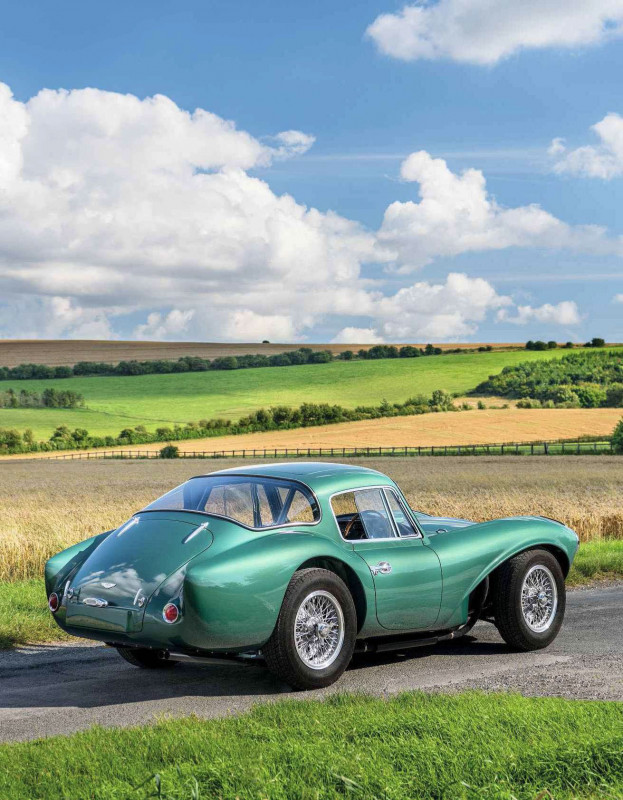
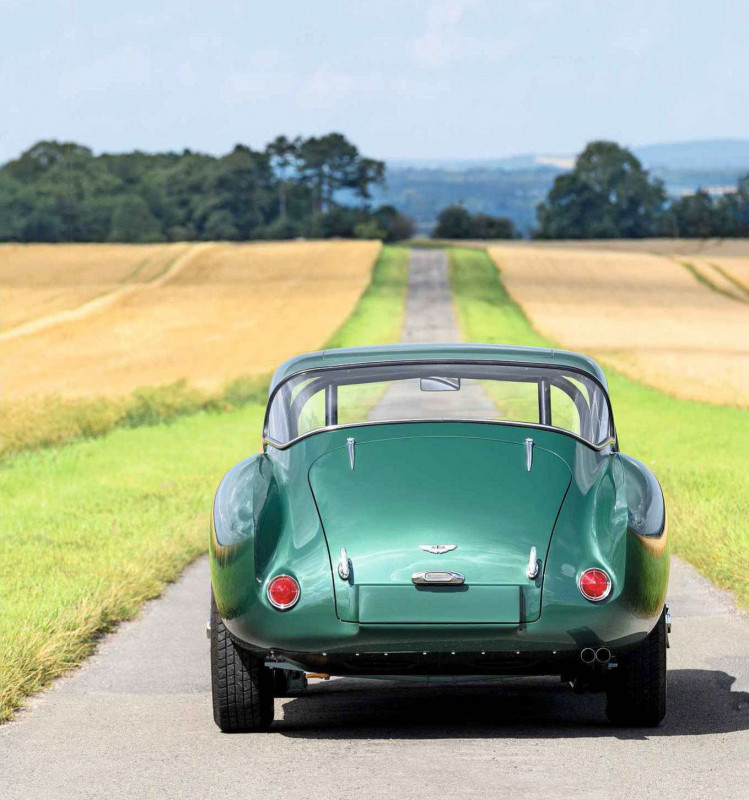
When it appeared in 1953 it won every race entered. The following year was rather less successful, but in 1955 the winning ways returned, with podiums in eight of 11 races and the top step in five of them. Its intended swansong year was 1956, when it had almost identical results to 1955, and in 1957 two final outings gave Salvadori and Brooks podium finishes. In private hands DB3S/6 came second at Le Mans in 1958, the third time a DB3S achieved that position there.
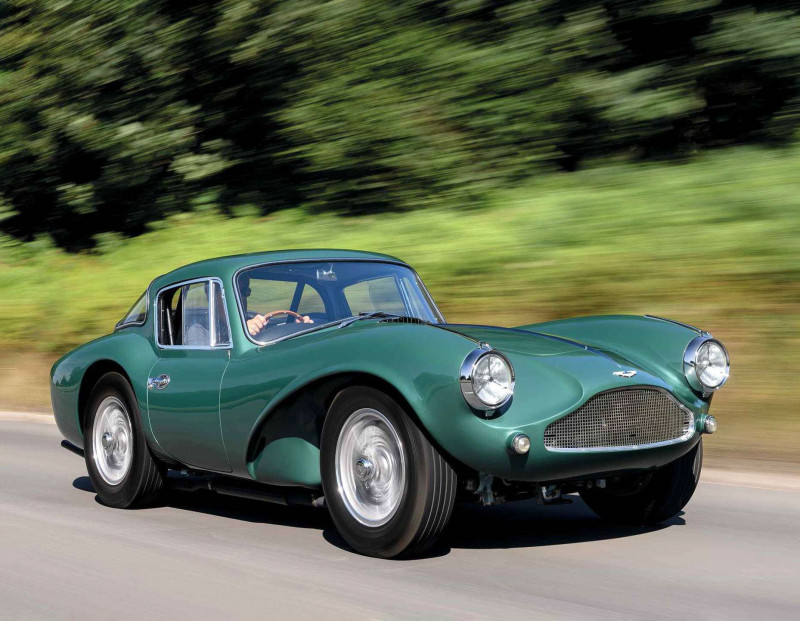
Unlike the relatively common D-type and numerous Ferraris, there were only ten team cars built and raced by the works between 1953 and 1956. A further 20 production versions for customers and gentleman drivers appeared between 1955 and 1956, many of which were raced in period. This car, DB3S/120, has the last chassis number and its customer was none other than Aston Martin boss David Brown. To his employees he was ‘Mr David’, or the Guvnor.
The DB3S’s origins can be traced to before the war, and are linked to many other significant cars. We should accept that very few cars were designed without some back story and this one is no exception. The chassis is derived from the heavier and slower DB3 of 1952, designed by Eberan von Eberhorst who, having been hired by Ferdinand Porsche, had a major hand in the design of the pre-war Auto Union D-Type. There his trailing-link front suspension and de Dion rear suspension were developed to deliver great success on the track. During the war he designed the Tiger tank, which had trailing-link and torsion bar suspension and, after hostilities ceased, he went on to design much of the Porsche 356 before moving to England and designing suspension for ERA. He joined Aston Martin with a brief to produce a winning car.
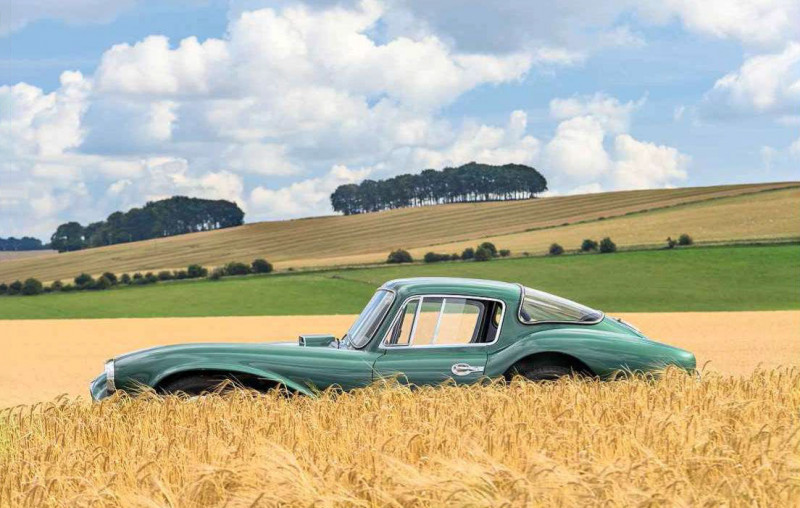
The simple chassis of the DB3 had much in common with the Auto Union, but its weight worked against it, so it was not as successful as David Brown had hoped. On paper it was an advanced car, but it lacked pace — and style. In 1953, von Eberhorst moved on.
Then it was left to Aston s Willie Watson to come up with the design thinking for the DB3S. Watson, who had helped to draw-up Astons twin-overhead-cam straight-six with WO Bentley, produced a lighter and better-handling car, and DB3 became DB3S. By 1953 a more powerful engine was available and, with a pretty body penned by Frank Feeley, the car was an immediate success.

Feeley remains one of the most unsung design geniuses of the 20th Century and the sublime DB3S s lines are surely his greatest legacy. Italian car design of that period was prosaic in comparison. David Brown s focus on racing meant that a customer version of the DB3S had to wait another two years to appear. Meanwhile, huge development effort was poured into the DB3S, which acquired three body styles as well as significant engine developments during its lifetime, resulting in a 25% power increase by 1956.
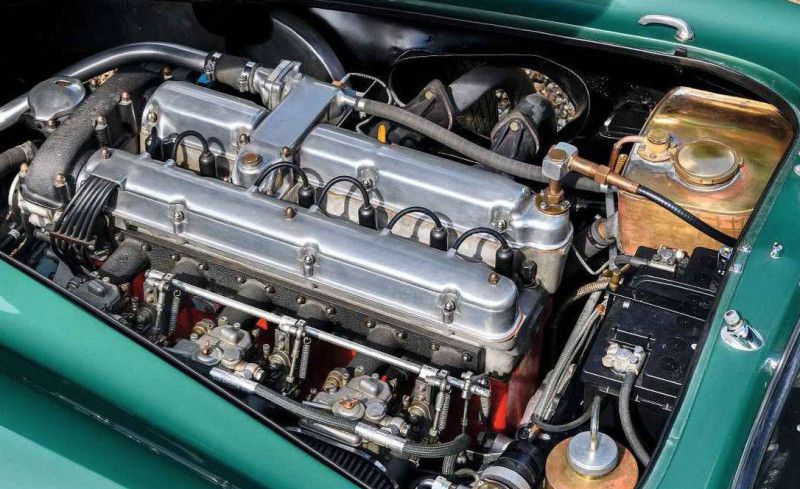
At Silverstone in May 1954, a pair of pretty DB3S Coupes made an appearance and four weeks later, at Le Mans, the same two cars were destroyed in identical crashes just yards apart, one hastening the end to the career of Jimmy Stewart (Jackies brother). This was one of the reasons why 1954 was a disastrous year: all four Le Mans entries retired. The Coupes had rear-end lift issues and a lack of understanding of aerodynamics led Aston Martin to abandon the idea of a racing DB3S Coupe, no matter how streamlined and pretty it was. Those two cars were re-bodied as open versions. Aside from this episode, the DB3S went on to become one of the all-time great sports racing cars.
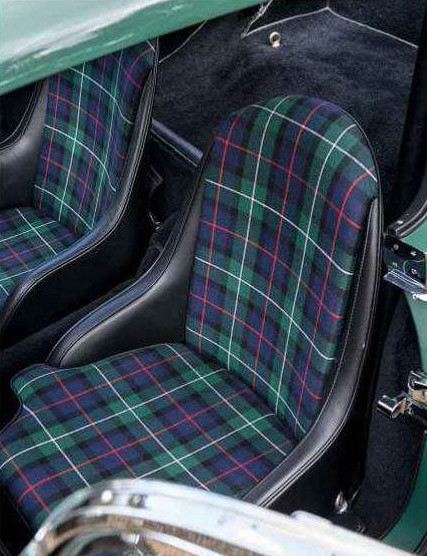
The production DB3S first appeared in late 1955 and almost all of them were pressed into service as competition cars, some of them seriously and often with great success. As production got into full swing, David Brown decided that he should have a DB3S with a coupe body: an ‘all-weather’ DB3S. Though this car has the last chassis number, it was the first such coupe to be built — Aston Martin has form when it comes to chassis numbers being unrelated to build order. The body was similar to the 1954 coupe, but the front half had Feeley s later body design with sleeker wings and more slender grille; the windows were refined for road use rather than lightweight plastic for the track. The screen was more upright, and the car looked the epitome of the roadracing coupe. David Brown took it to Silverstone in May 1956, as soon as it had been finished. It was presented in metallic lavender, wheels and all — did I mention this being a colourful story? It must have stopped the crowds.
Browns friend, the newspaper baron Max Aitken, owner of The Daily Express, ordered a black coupe, and Robert Ropner, long-time Aston enthusiast and shipbuilder, ordered the third coupe, appropriately in Battleship Grey.
After it had spent two years in Browns hands, John Wyer sold the car to the talented Jean Bloxam (later Jean Salmon), who changed the registration from 58 JHXto her own plate: JB 16. Aston Martin gave the car some racing upgrades and painted it in Astons racing green, the colour it wears today. Bloxam may have been diminutive but she was a very talented driver. She drove the DB3S in a dozen events in 1958, including Goodwood, Oulton Park, Silverstone and several hillclimbs. Her record included numerous wins but she moved on to racing ex-team DB3Ss, the disc brakes of which she found more effective.
Peter Sutcliffe acquired the car in early 1963, and we reunited him with ‘his’ DB3S for this feature. Sutcliffe had been making a name for himself in a Jaguar D-type but a big crash at Snetterton meant that he had to sell his DB4 Convertible (to his father) to help pay for the repair. Nonetheless, Sutcliffe needed transportation and, ever the man for style, he placed an advertisement in Motor Sport, looking for chassis 120. He told the dealer: ‘If you and the car can make it to Yorkshire I may buy it.’
As Sutcliffe now recalls: ‘It looked a bit tired and odd in maroon with yellow wheels, but I bought the car, painted it British Racing Green and it was one of the best cars that I ever had. It never let me down and I did a couple of hillclimbs in it.’
By that time, Peter was racing his new E-type Lightweight and Aston Martin DP214 at Le Mans but, as he says: ‘The DB3S was the ideal car, lovely on the road, fast enough in the traffic of the day. It was very well-sorted because Arthur Birks had looked after it for Jean Salmon and he was very capable. I drove the other two coupes but 120 was by far the nicest to drive.’ In 1964 he sold it to buy a DB4 GT. Peter Sutcliffe is without doubt the definitive gentleman driver but one of huge talent, and who became a works Ferrari driver before he retired in 1968.
The coupe went on to enjoy a life of club racing and spent some time in South Africa before returning to the UK and being enjoyed and campaigned in more recent Historic races for owners such as Paul Vestey, Frank Sytner, Paul Michaels and Lord Bamford. For the past decade it has been in the USA but now it has returned home. The recently passed Rex Woodgate helped build the car in 1956 and so, appropriately, its first stop after arriving in the UK was a visit to Chris Woodgate, to check that it was all right and ‘how dad would have built it’.
Assessing such a car from the driver’s perspective poses an interesting challenge because so many cars from 65 years ago could be judged objectively today as wanting and even unsafe. To help give a true perspective, let’s consider what the legendary Laurence Pomeroy wrote of this very car in 1956, and Steve Cropley in 1995. Pomeroy remarked:
‘Acceleration, braking and steering were quickly to be found of the first order, the steering in particular being extremely light so that only the slightest pressure would result in a considerable translation of the car’s attitude on the road. Everything is made so easy that it is hard to tell how near one is to the limit. Several times I swept around a curve at 90mph in third and thought that Collins would be doing 110 in top. Some idea of the smoothness and relaxation which a car having performance of this order can give at lower speeds may be indicated by the ability to enjoy the radio at 1 OOmph. I was easily able to hear commentary from the Oval as Laker’s side destroyed the Australians.’ So there you have it, a DB3S in which you can listen to live cricket.
Cropley’s experience and perspective 30 years on, when cars had been transformed, was less reverential, but it should be borne in mind that the car was then equipped with racing brake linings (‘appalling when cold’), racing tyres (‘they chase camber’), and a racing clutch (get it wrong and you stall’). More positively he praised the extremely sharp’ steering and the ride: ‘The occupants seem to be at the chassis’ fulcrum.’ He also approved of the gearbox’s ‘rifle bolt gearchange’, as well as the engine: ‘It pulls with real will above 2500rpm.’
Today the car does not feel modern, thank goodness, because what the DB3S provides is driving pleasure and rewards that few, if any, modern cars can: regulations and boardrooms have designed out most of the ways in which potential drivers can come unstuck in anyway.
The initial impression is that the DB3S is not only small but also delicate of form. That impression continues inside, where most controls and dials are perfectly placed. The sweep of the cathedral-topped wings is beguiling and gives a sense of movement even when you’re stationary.
Once you’re moving you know exactly where each wheel is in relation to your backside, and the relationship between your actions and the car’s reactions is direct in every respect. To hell with cricket on the radio, even the now-elongated exhaust gives plenty of roar and a sense that this is a racing car first and foremost. Surprisingly, however, the ride is perhaps its strongest suit, utterly compliant, gentle, forgiving and with total control: it makes many a modern saloon feel irritatingly harsh in comparison. The engine certainly offers fabulous urge above 2500rpm and, though the steering is instinctive rather than to be controlled, there is a constant
invitation to use the right foot to help steer it and this is where the hairs on the back of the neck rise.
The controllability is simply superb; it would be easy to imagine how Jean Bloxam drifted this car all the way around Goodwood without effort. The car is alive but oh-so-friendly and easy and the steering is so direct that it barely needs input; turn in, squeeze the right pedal and hold the steering wheel in one position. Divine.
The Astons bucket seats hold well even though they look as though they could have come out of a World War Two bomber; the large steering wheel is exactly the right size and mercifully thin, allowing for fingers more than palms to hold the wheel, thus giving the best possible feedback. Even for an occupant well over 6ft tall the cabin is surprisingly comfortable, and on a hot day the roof panel can be removed and placed on the rear shelf. Try doing that in a Gullwing!
The DB3S evolved greatly during its time but from day one it was a great car, and it provided Aston Martin with its halcyon racing days, cementing its reputation for all time as a maker of great racing cars and helping to fill the company’s large trophy cabinet. The production cars are among the most sought-after of 1950s competition cars, and the DB3S Coupe is the rarest version of that line. As one of the coupes no longer wears its original body chassis 120 is now one of only two examples. It would be difficult to think of a more special Aston Martin.
TECHNICAL DATA 1955 Aston Martin DB3S Coupe
- Engine 2992cc DOHC straight-six, iron block, triple twin-choke 40mm Weber carburettors Max Power 180bhp @ 6000rpm
- Max Torque 140lb ft @ 3800rpm
- Transmission Four-speed manual, rear-wheel drive
- Steering Rack and pinion
- Suspension Front: twin trailing arms, torsion bars, lever-arm dampers. Rear: de Dion axle, torsion bars, telescopic dampers rakes Alfin drums
- Weight 1000kg
- Top speed 155mph
- 0-60mph 6.0sec

Clockwise, from far left Interior is surprisingly accommodating; Jean Bloxam (16) at AMOC Silverstone in 1958, with future husband Mike Salmon C-type) to her left; Peter Shutcliffe today, and Shelsley Walsh with this car in 1966.
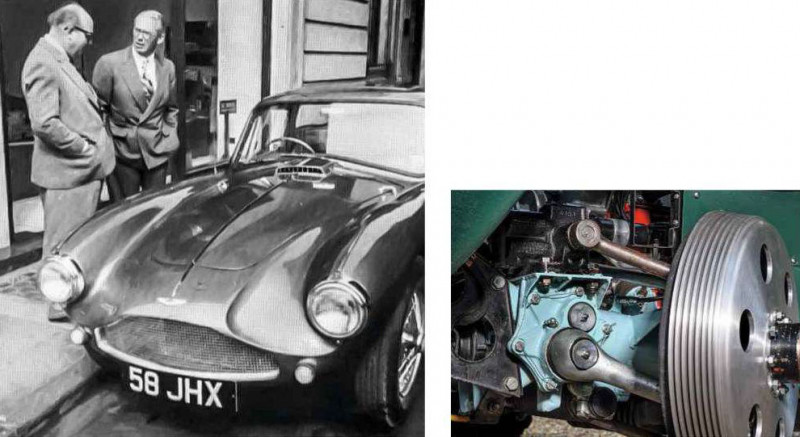
From left Laurence Pomeroy (on left) with David Brown, when he road-tested the car in 1956; detail shows trailing link front suspension; sweet-looking tail of coups bodywork.
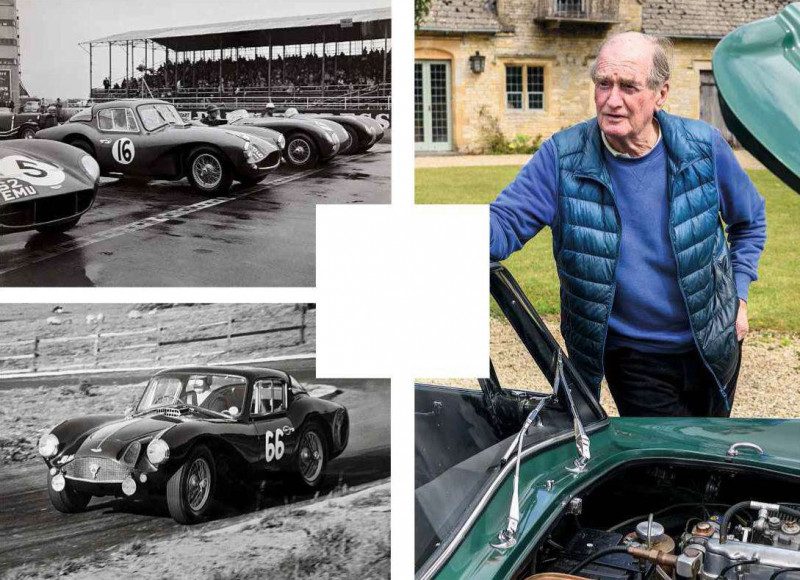
Far left and above The final series of coupes (of which this is the first built) benefited from the DB3S Coupe evolved bodywork style, twin-cam straight-six was developed with input


